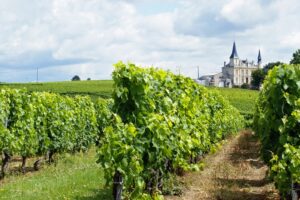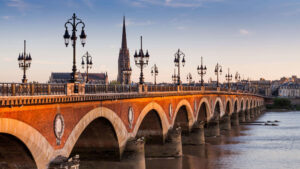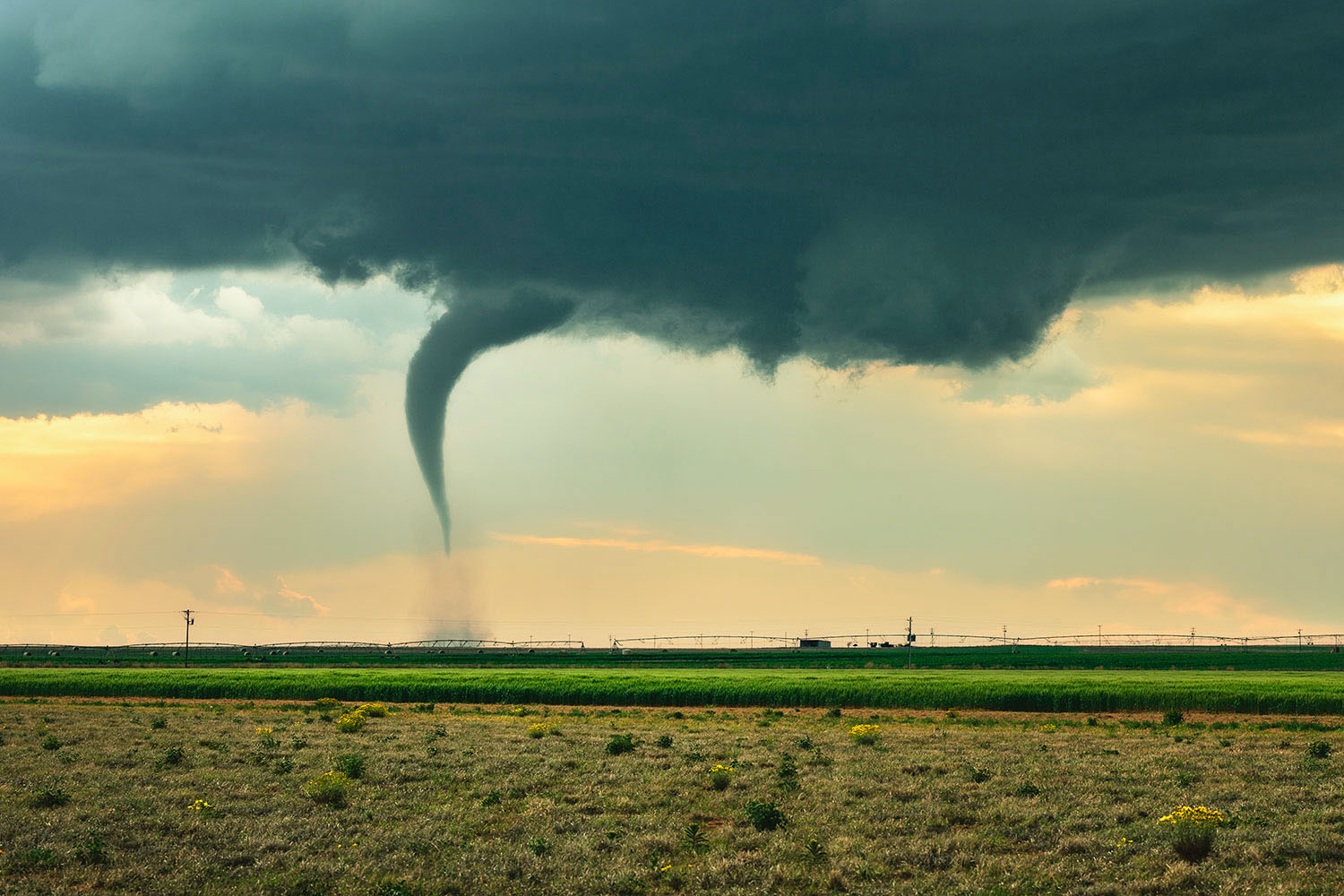The Vineyards of Bordeaux: A Journey Through France’s Wine Capital
Bordeaux, a name synonymous with world-class wines, is a region steeped in history, culture, and, of course, viticulture. Nestled in the heart of southwestern France, Bordeaux’s vineyards offer an unforgettable experience for wine enthusiasts and casual travelers alike. With its sprawling estates, charming châteaux, and an unparalleled tradition of winemaking, Bordeaux invites you to embark on a journey through one of the most renowned wine regions in the world.
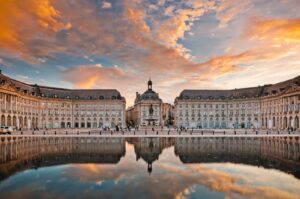
A Historical Perspective
The story of Bordeaux’s vineyards begins over two millennia ago when the Romans first planted vines in the region. Bordeaux’s wine trade truly flourished in the Middle Ages, with its proximity to the Atlantic making it an ideal location for exporting wine to England and beyond. The region’s rich history is evident in the architecture of its ancient châteaux, many of which date back centuries and stand as a testament to Bordeaux’s long-standing reputation as a wine capital.
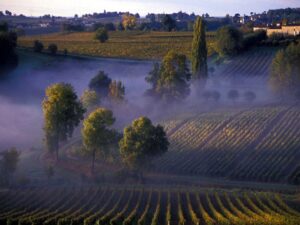
The Terroir: The Secret Behind Bordeaux’s Excellence
One of the key factors contributing to Bordeaux’s wine prestige is its unique terroir. Bordeaux’s climate, with its temperate weather influenced by the nearby Atlantic Ocean, provides the perfect conditions for grape cultivation. The region’s diverse soil types—ranging from gravel and limestone to clay and sand—further enhance the complexity and richness of Bordeaux wines. These soils, coupled with meticulous vineyard management, result in wines that are beautifully balanced, with a remarkable ability to age gracefully.
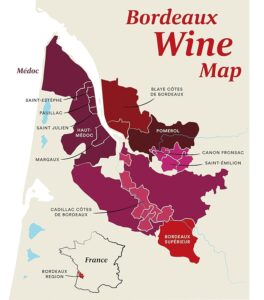
The Wine Regions of Bordeaux
Bordeaux is divided into several sub-regions, each with its distinct character and grape varietals. Here’s a brief overview of some of the most famous appellations:
-
Médoc: Known for its robust red wines, Médoc is home to prestigious estates such as Château Margaux and Château Latour. The wines from this region, predominantly made from Cabernet Sauvignon, are celebrated for their structure, elegance, and aging potential.
-
Saint-Émilion: This picturesque region, with its medieval village and rolling hills, produces wines primarily from Merlot and Cabernet Franc. Saint-Émilion wines are often softer and more approachable in their youth, with lush fruit flavors and a velvety texture.
-
Pomerol: Neighboring Saint-Émilion, Pomerol is a small but highly respected appellation. Its wines, often made from Merlot, are opulent and rich, with a unique plushness that distinguishes them from other Bordeaux reds.
-
Graves: Known for both red and white wines, Graves is one of the oldest wine-producing regions in Bordeaux. The red wines, made from a blend of Cabernet Sauvignon and Merlot, are noted for their complexity, while the dry white wines, often made from Sauvignon Blanc and Sémillon, are fresh and aromatic.
-
Sauternes: For those with a sweet tooth, Sauternes offers some of the finest dessert wines in the world. These luscious, golden wines are made from grapes affected by noble rot (Botrytis cinerea), resulting in concentrated, honeyed flavors with an exquisite balance of sweetness and acidity.
Must-Visit Châteaux and Wine Tours
No visit to Bordeaux would be complete without touring some of its iconic châteaux. Whether you’re a novice or a seasoned oenophile, Bordeaux offers a variety of wine tours that cater to every interest. Here are a few highlights:
-
Château Margaux: One of the five First Growths of Bordeaux, Château Margaux is a must-visit for anyone exploring the Médoc region. The estate’s stunning architecture and perfectly manicured vineyards are matched only by the quality of its wines.
-
Château Cheval Blanc: Situated in Saint-Émilion, this estate is renowned for producing some of the most exquisite and sought-after wines in the world. The château itself is a blend of tradition and modernity, reflecting the philosophy behind its winemaking.
-
Château d’Yquem: Located in Sauternes, Château d’Yquem is famous for its legendary sweet wines. A visit here offers a glimpse into the meticulous process behind producing wines that can age for decades, if not centuries.
-
Château Pape Clément: One of the oldest wine estates in Bordeaux, Château Pape Clément in Graves offers a rich history dating back to the 13th century. Visitors can enjoy guided tours that delve into the estate’s heritage and taste its exceptional wines.
The Bordeaux Experience: Beyond the Vineyards
While the vineyards are the star of the show, Bordeaux has much more to offer. The city of Bordeaux itself is a UNESCO World Heritage site, with its elegant 18th-century architecture, bustling markets, and vibrant food scene. Don’t miss a stroll along the Garonne River or a visit to the Cité du Vin, an interactive museum dedicated to the world of wine.
For those looking to explore further, the surrounding countryside offers charming villages, historic abbeys, and breathtaking landscapes. The Dordogne River, which winds through many of Bordeaux’s wine regions, provides a scenic route for leisurely drives or boat tours.
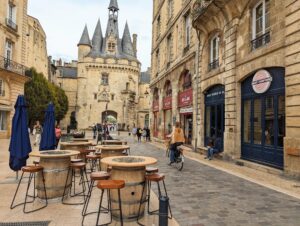
Practical Tips for Visiting Bordeaux Vineyards
-
Plan Ahead: Many of Bordeaux’s most famous châteaux require reservations for tours and tastings, so it’s wise to book in advance, especially during peak season.
-
Best Time to Visit: While Bordeaux can be visited year-round, the harvest season in September and October offers a unique opportunity to see the winemaking process in action.
-
Getting Around: Renting a car is the most convenient way to explore Bordeaux’s vineyards, but guided tours are also available for those who prefer a more relaxed experience.
-
Wine Etiquette: When visiting a château, it’s customary to buy a bottle of wine as a token of appreciation. It’s also a great way to take a piece of Bordeaux home with you!

Exploring the vineyards of Bordeaux is more than just a wine-tasting trip; it’s a journey through centuries of history, culture, and tradition. Whether you’re sipping a glass of Cabernet Sauvignon in Médoc or enjoying the view from a Saint-Émilion terrace, Bordeaux promises an experience that will linger in your memory long after the last drop of wine has been savored.

